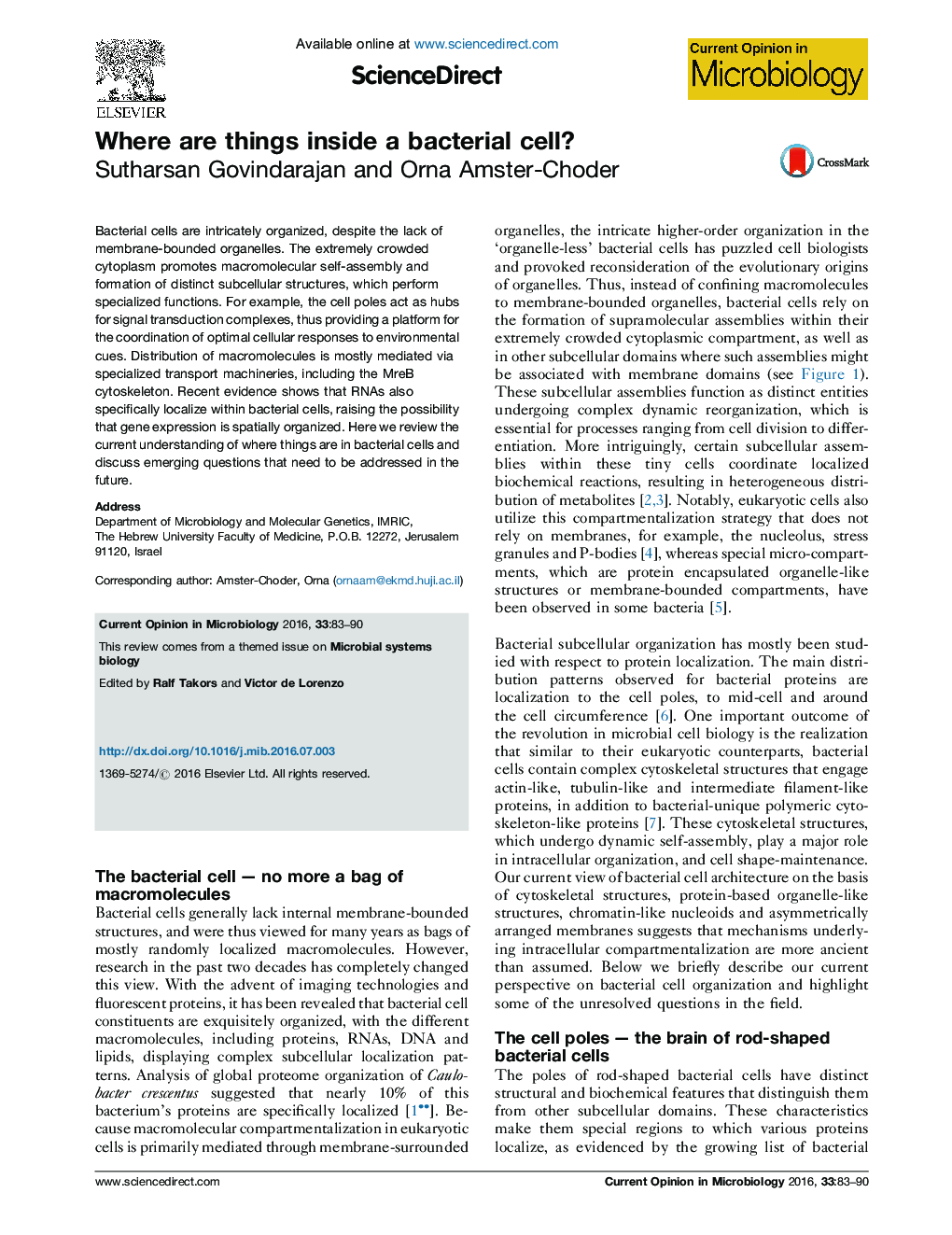| Article ID | Journal | Published Year | Pages | File Type |
|---|---|---|---|---|
| 6131508 | Current Opinion in Microbiology | 2016 | 8 Pages |
Abstract
Bacterial cells are intricately organized, despite the lack of membrane-bounded organelles. The extremely crowded cytoplasm promotes macromolecular self-assembly and formation of distinct subcellular structures, which perform specialized functions. For example, the cell poles act as hubs for signal transduction complexes, thus providing a platform for the coordination of optimal cellular responses to environmental cues. Distribution of macromolecules is mostly mediated via specialized transport machineries, including the MreB cytoskeleton. Recent evidence shows that RNAs also specifically localize within bacterial cells, raising the possibility that gene expression is spatially organized. Here we review the current understanding of where things are in bacterial cells and discuss emerging questions that need to be addressed in the future.
Related Topics
Life Sciences
Immunology and Microbiology
Microbiology
Authors
Sutharsan Govindarajan, Orna Amster-Choder,
